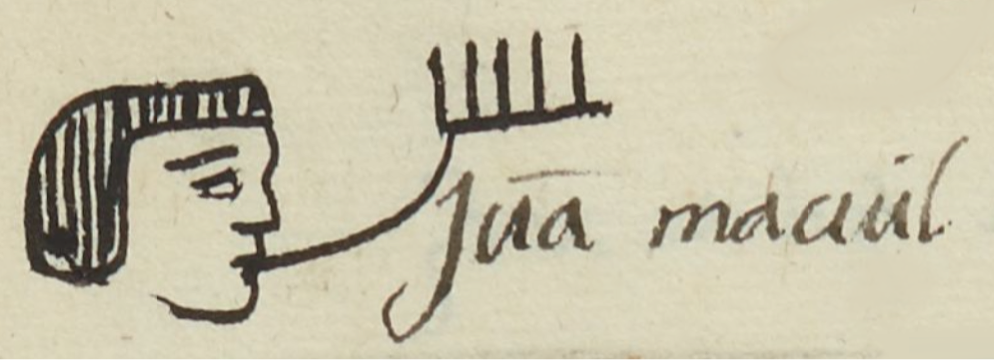Macuil (MH492v)
This black-line drawing of the simplex glyph/notation for the personal name Macuil ("Five," attested here as a man's name) shows a group of five (macuilli) vertical black lines connected at the bottom with a horizontal black line.
Stephanie Wood
Macuil is probably all that remains of a calendrical name that involved the number five in combination with any one of twenty day signs, such as xochitl, or the like. This would be a name given to the man as a child, depending upon the day in the calendar that coincided with his birth. By the time of this manuscript, 1560, evolution was taking place in the use of the divinatory calendar, whereby either the number was dropping away, or in this case, the day sign was lost or omitted consciously. Macuil is an especially prevalent example of this change.
Stephanie Wood
Juā macuil
Juan Macuil
Stephanie Wood
1560
Stephanie Wood
números, cinco, calendarios, días, fechas, nombres de hombres, tonalpohualli

macuil(li), five, https://nahuatl.wired-humanities.org/content/macuilli
Cinco
Stephanie Wood
Matrícula de Huexotzinco, folio 492v, World Digital Library, https://www.loc.gov/resource/gdcwdl.wdl_15282/?sp=64&st=image.
This manuscript is hosted by the Library of Congress and the World Digital Library; used here with the Creative Commons, “Attribution-NonCommercial-ShareAlike 3.0 License” (CC-BY-NC-SAq 3.0).





